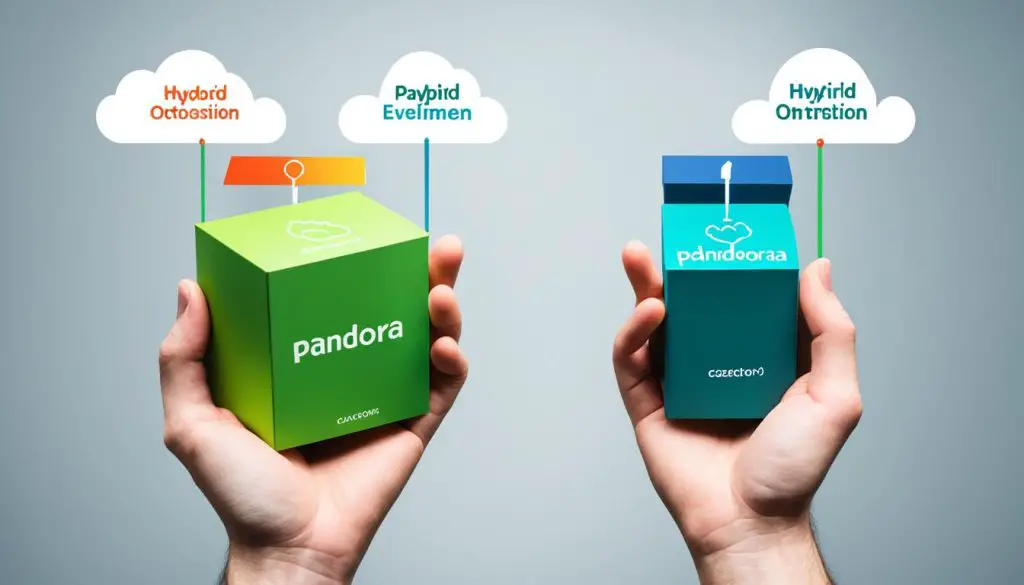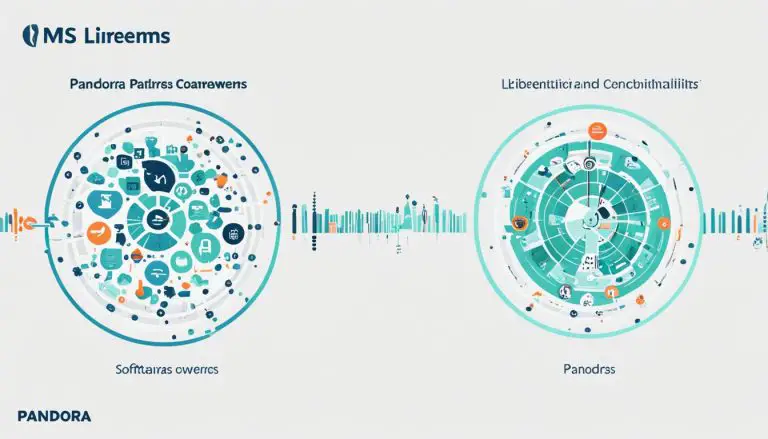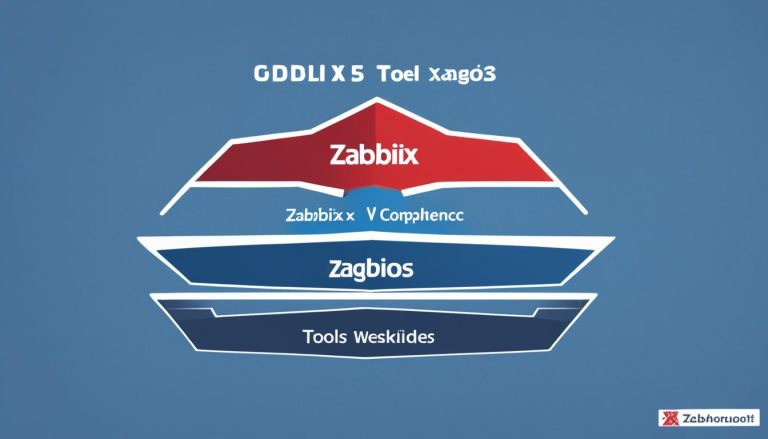Cacti vs. Pandora NMS: Network Monitoring Smackdown
Are you struggling to find the right network monitoring tool for your organization? Look no further! In this article, I will delve into a detailed comparison of two popular options: Cacti and Pandora NMS. From features and scalability to integrations and cost considerations, I will cover everything you need to know to make an informed decision for your network management needs.
Key Takeaways:
- Understand the features and functionalities offered by Cacti and Pandora NMS
- Consider the scalability of both tools based on the size of your network
- Explore the integrations and compatibility options available
- Weigh the ease of use and user interface against your technical proficiency
- Compare the support and community resources provided by each tool
Understanding Cacti
Cacti is an open-source network monitoring tool that provides a powerful and comprehensive solution for performance analysis and graphing in network monitoring. With its robust features and flexibility, Cacti has become a popular choice among IT professionals.
One of the key advantages of Cacti is its open-source nature. As an open-source tool, Cacti offers freedom and flexibility to customize and adapt it according to specific network monitoring needs. This makes it a cost-effective and adaptable solution for organizations.
At the core of Cacti’s functionality is its use of SNMP (Simple Network Management Protocol) and RRDtool (Round Robin Database Tool). SNMP allows Cacti to collect data from network devices, such as routers and switches, enabling real-time monitoring of network performance. RRDtool, on the other hand, is responsible for storing this data and generating customized graphs and charts.
With Cacti, users have the ability to create visually engaging graphs and charts to analyze network performance. These graphs can be customized to display various metrics, such as bandwidth usage, CPU utilization, and network latency. By visually representing this data, Cacti helps users gain insights into their network’s performance and identify any potential issues.
Cacti’s graphing solution is not limited to pre-configured templates. Users can create their own templates and graphs based on their specific requirements. This flexibility allows for a tailored monitoring experience that aligns with the unique needs of each organization.
Additionally, Cacti provides support for various plugins and extensions, further enhancing its capabilities. These plugins allow users to extend the functionality of Cacti by integrating with other tools and technologies, making it a versatile solution for network monitoring.
Overall, Cacti’s open-source nature, reliance on SNMP and RRDtool, and its ability to create customizable graphs and charts make it a powerful and flexible network monitoring tool.
Exploring Pandora NMS
Pandora NMS is a powerful network management software that offers a range of monitoring capabilities for your IT infrastructure. As a proprietary solution, Pandora NMS provides advanced features and functionalities to help optimize your network performance.
One of the key highlights of Pandora NMS is its robust alerting system. This feature ensures that you’re always aware of any network issues or anomalies as they arise. By receiving real-time notifications, you can take proactive measures to troubleshoot and address potential problems before they escalate.
With Pandora NMS, you gain comprehensive visibility into your network’s health and performance. The software allows you to monitor various components of your network, such as servers, switches, routers, and applications. This level of monitoring capability enables you to identify bottlenecks, pinpoint performance issues, and ensure the smooth operation of your network.
Furthermore, Pandora NMS provides a user-friendly interface that allows for easy navigation and configuration. The intuitive design streamlines the monitoring process, allowing you to quickly set up and manage your network monitoring tasks. This user-friendly approach ensures that you can efficiently utilize the software’s monitoring capabilities without extensive training or technical expertise.
Additionally, Pandora NMS offers scalability to accommodate networks of all sizes. Whether you have a small, medium, or large-scale network, you can rely on Pandora NMS to provide the necessary monitoring and management functionalities. This scalability ensures that the software grows alongside your network, catering to your evolving monitoring needs.
In summary, Pandora NMS is a proprietary network management software that offers advanced monitoring capabilities and an effective alerting system. It provides a user-friendly interface, comprehensive visibility into your network’s performance, and the scalability to support networks of any size. By leveraging the features and functionalities of Pandora NMS, you can proactively manage and optimize your network for enhanced efficiency and reliability.
Feature Comparison
When comparing the features of Cacti and Pandora NMS, it is important to consider the specific capabilities and functionalities offered by each tool. Both Cacti and Pandora NMS provide a range of features that cater to different aspects of network monitoring and management.
Cacti features: One of the key strengths of Cacti lies in its graphing and performance analysis capabilities. With Cacti, you can create customizable graphs and charts to visualize network performance, allowing for in-depth analysis and troubleshooting. The tool utilizes SNMP (Simple Network Management Protocol) for data collection and RRDtool (Round Robin Database Tool) for data storage, ensuring reliable and accurate monitoring.
Pandora NMS features: On the other hand, Pandora NMS focuses on comprehensive network monitoring and management functionality. It offers a wide range of features that include real-time monitoring, event correlation, network discovery, and an alerting system. Pandora NMS provides a centralized dashboard to monitor the health and performance of your network, enabling proactive maintenance and issue resolution.
Ultimately, the choice between Cacti and Pandora NMS depends on the specific needs and priorities of your organization. If you prioritize detailed graphing and performance analysis, Cacti may be the preferred option. However, if comprehensive network monitoring and management capabilities are crucial for your organization, Pandora NMS may be the better fit.
Consider the requirements of your network monitoring strategy and the specific features offered by each tool to make an informed decision. It is advisable to evaluate the scalability, ease of use, integrations, and overall compatibility with your existing infrastructure before making a choice.
Remember, the ultimate goal is to select a network monitoring tool that aligns with your organization’s objectives and empowers you to effectively manage and monitor your network for optimal performance.
Scalability and Performance
Scalability and performance are crucial factors to consider when selecting a network monitoring tool. Depending on the size and complexity of your network, different tools may offer varying levels of scalability and performance. In the case of Cacti and Pandora NMS, each tool caters to specific network sizes.
Cacti is well-suited for small to medium-sized networks, providing reliable monitoring capabilities and performance analysis. It offers a scalable solution that can handle the needs of growing networks. However, for large-scale networks, a monitoring tool with enhanced capabilities is essential to ensure optimal performance and efficient management.
This is where Pandora NMS comes into play. Designed specifically for larger-scale networks, Pandora NMS offers robust features and performance analysis tools to accommodate complex environments. It is equipped to handle the demands of extensive network infrastructures without compromising efficiency.
To visualize the differences in scalability between Cacti and Pandora NMS, consider the following analogy:
Imagine managing a small garden versus overseeing a vast, sprawling landscape. Cacti excels at maintaining the beauty and health of the garden, ensuring that each plant thrives within its designated space. However, when it comes to the expansive landscape, Pandora NMS steps in, offering the necessary tools and resources to manage the diverse flora and fauna, keeping the landscape in harmony.
By carefully evaluating the size and complexity of your network, you can determine which tool aligns best with your scalability and performance needs. Whether you require a monitoring solution for a small to medium-sized network or a large-scale infrastructure, choosing the right tool ensures seamless operations and efficient performance analysis.
In the next section, we will explore the integrations and compatibility of Cacti and Pandora NMS, providing insights into how these tools can seamlessly integrate with your existing network infrastructure.
Image Placement:
Before delving into integrations and compatibility, let’s take a visual break to understand the importance of scalability and performance. Below is an image that highlights the significance of these factors in network monitoring:
Integrations and Compatibility
Both Cacti and Pandora NMS offer seamless integrations with various third-party tools and technologies, enhancing their functionality and compatibility with existing systems. Cacti boasts a wide range of plugins and templates that can be easily integrated into your network monitoring setup, providing additional features and customizability. These integrations allow you to extend the capabilities of Cacti and tailor it to your specific needs.
Pandora NMS, on the other hand, provides native support for popular IT infrastructure components, ensuring compatibility with a wide range of systems and devices. This native support simplifies the integration process and allows for a smooth transition from legacy systems to Pandora NMS.
Whether you choose Cacti or Pandora NMS, considering the specific integrations and compatibility requirements for your network environment is crucial. Evaluate the tools’ integration capabilities, such as support for SNMP (Simple Network Management Protocol) and other industry-standard protocols, to ensure seamless communication and data exchange between different systems. Compatibility with your existing hardware, software, and network infrastructure is equally important to guarantee a harmonious integration.
The Power of Third-Party Tools
Integrating third-party tools with your chosen network monitoring software can greatly enhance its capabilities and provide you with comprehensive insights into your network performance. These tools can include performance analyzers, anomaly detection platforms, security tools, and more.
For example, by integrating Cacti with performance analysis tools, you can gain deeper visibility into your network’s performance trends, identify bottlenecks, and make data-driven decisions to optimize your network’s efficiency. Similarly, integrating Pandora NMS with security tools can provide you with real-time threat detection and proactive measures to protect your network against cyber threats.
Integrating third-party tools into your network monitoring software brings the power of specialized solutions to your fingertips, empowering you to better monitor, analyze, and secure your network infrastructure.
When selecting your network monitoring tool, consider the availability of third-party integrations and the compatibility of these integrations with your existing tools and systems. The ability to seamlessly integrate with third-party tools can significantly enhance the effectiveness and efficiency of your network monitoring efforts.
Ease of Use and User Interface
When evaluating network monitoring tools, the ease of use and user interface are critical factors to consider. Cacti and Pandora NMS both offer intuitive and user-friendly interfaces, but there are nuances to consider.
Cacti: Simplifying Network Monitoring
Cacti is known for its intuitive user interface, which contributes to its popularity among users. Its straightforward design and features make it easy for users to navigate and understand. Whether you are an experienced network administrator or new to network monitoring, Cacti provides a seamless user experience that emphasizes ease of use.
With Cacti, users can effortlessly create custom visualizations using its graphing and performance analysis capabilities. The platform’s intuitive layout and well-organized menus empower users to quickly access critical information and perform necessary tasks. The simplicity of Cacti’s user interface enables efficient network monitoring without the need for extensive training or technical expertise.
Pandora NMS: Powerful Functionality, Slightly More Complexity
Pandora NMS, while also offering a user-friendly interface, may require users to invest slightly more time in familiarizing themselves with the platform’s navigation and features. The additional complexity is due to Pandora NMS providing comprehensive network monitoring and management functionality.
“Pandora NMS offers powerful monitoring capabilities with an emphasis on detail, which is why some users may initially find it slightly more complex to navigate. However, once users become familiar with the platform’s structure and functionalities, Pandora NMS provides a robust and efficient user experience.”
Pandora NMS offers an extensive range of monitoring features, providing users with deep insights into their network performance. Although it may require a slightly steeper learning curve, its comprehensive functionality compensates for the initial adjustment period.
When evaluating the ease of use and user interface of Cacti and Pandora NMS, it is essential to consider the technical proficiency of your team. If your team is new to network monitoring or prefers a more straightforward approach, Cacti’s intuitive interface may be the ideal choice. However, if your organization requires advanced monitoring capabilities and is willing to invest time in learning a slightly more complex platform, Pandora NMS offers a powerful solution.
Support and Community
When it comes to choosing a network monitoring tool, having reliable support and a vibrant community can make a significant difference. In the case of Cacti, an open-source solution, you can count on a strong and active community to provide assistance and resources.
The Cacti community comprises a diverse group of users who are passionate about sharing their knowledge and expertise. They offer a wide range of resources, including forums, documentation, and tutorials, making it easier for users to resolve issues and discover new functionalities.
On the other hand, Pandora NMS, being a proprietary tool, offers dedicated support channels and professional services. Their support team is equipped to handle specific queries and provide timely assistance to users.
“I’ve always found the Cacti community to be a valuable resource. Whether it’s troubleshooting an issue or exploring advanced features, there’s always someone willing to help. The collective knowledge of the community is truly impressive.”
While Cacti’s community support is extensive, Pandora NMS provides a more streamlined support experience through their dedicated channels. Their professional services ensure that users receive personalized assistance based on their unique requirements.
When considering the support and community aspects, it’s worth factoring in the nature of the tools. Cacti, being open-source, benefits from a collaborative and communal approach, where users contribute to its growth and development. On the other hand, Pandora NMS offers a structured support system that caters to the needs of users depending on their licensing agreements.
Ultimately, the level of support and the community resources available should be important factors in your decision-making process. Consider the type of support you prefer and the level of involvement you desire from the community when selecting a network monitoring tool.
Cost Considerations
When considering network monitoring tools, one important factor to weigh is the cost. Cacti, an open-source tool, offers a cost-effective solution, as it is completely free to use without any licensing fees.
On the other hand, Pandora NMS, as a proprietary tool, involves licensing fees that are based on the size and complexity of your network. This cost is an important consideration for organizations with budgetary constraints.
It’s worth noting that while Cacti is open-source and free, it still provides powerful features and functionality for network monitoring. Although Pandora NMS comes with licensing costs, it offers a comprehensive suite of monitoring capabilities that may be worth the investment for organizations with specific needs.
When choosing between open-source and proprietary options, it’s crucial to evaluate not only the cost but also the features, scalability, and support that each tool provides.
Ultimately, the decision between Cacti and Pandora NMS will depend on your organization’s budget and specific requirements. Carefully consider the cost implications and the value each tool brings to your network monitoring strategy.
Deployment Options
When it comes to choosing a network monitoring tool, considering the deployment options is crucial. Let’s take a look at how Cacti and Pandora NMS offer different choices in this regard.
On-Premises Deployment with Cacti
Cacti allows users to deploy the software on-premises, giving organizations full control over their monitoring environment. This option is favored by many IT teams who prioritize data sovereignty and security. By hosting Cacti on-premises, you can ensure that your network monitoring data remains within your organization’s infrastructure.
With on-premises deployment, you have the freedom to customize and tailor Cacti to meet your specific requirements. It allows for seamless integration with other on-premises tools and systems that you might have in place.
Flexibility and Scalability with Pandora NMS
Pandora NMS offers both on-premises and cloud-based deployment options, providing flexibility and scalability for diverse network environments. With the cloud-based option, you can leverage the power of cloud infrastructure and benefit from the scalability it offers. This allows you to easily expand your monitoring capabilities as your network grows.
Deploying Pandora NMS on-premises gives you the advantage of having complete control over your network management and monitoring system. It allows you to have a direct handle on the infrastructure and make adjustments as needed to meet your specific requirements.
The cloud-based deployment, on the other hand, relieves organizations from the burden of managing their own infrastructure. It enables faster implementation, automatic updates, and the ability to access network monitoring data from anywhere, at any time.

Regardless of the deployment option you choose, both Cacti and Pandora NMS offer robust network monitoring capabilities. It’s important to consider your organization’s infrastructure, data security requirements, and scalability needs when making a decision.
Conclusion
In conclusion, when comparing the network monitoring tools Cacti and Pandora NMS, it is important to consider your specific requirements, network size, budget, and preferences. Both Cacti and Pandora NMS have their strengths and can provide valuable insights into your network performance.
To make an informed decision, evaluate the features offered by each tool. Cacti excels in graphing and performance analysis, while Pandora NMS offers comprehensive network monitoring and management capabilities. Consider the scalability of the tools in relation to the size of your network and the integrations they support.
Furthermore, take into consideration the ease of use and user interface of the tools, as well as the support and community resources available. Additionally, consider the cost implications, with Cacti being an open-source tool with no licensing fees and Pandora NMS involving licensing costs.
By carefully considering these factors, you can confidently make a decision that aligns with your network monitoring needs and ensures the smooth operation of your IT infrastructure.
FAQ
What is Cacti?
What is Pandora NMS?
What are the key features of Cacti and Pandora NMS?
Which tool is better for large-scale networks?
Do Cacti and Pandora NMS support third-party integrations?
Which tool is easier to use?
What kind of support is available for Cacti and Pandora NMS?
Are there any cost implications when using Cacti or Pandora NMS?
Can Cacti and Pandora NMS be deployed on-premises?
How do I choose between Cacti and Pandora NMS?
- About the Author
- Latest Posts
Mark is a senior content editor at Text-Center.com and has more than 20 years of experience with linux and windows operating systems. He also writes for Biteno.com






